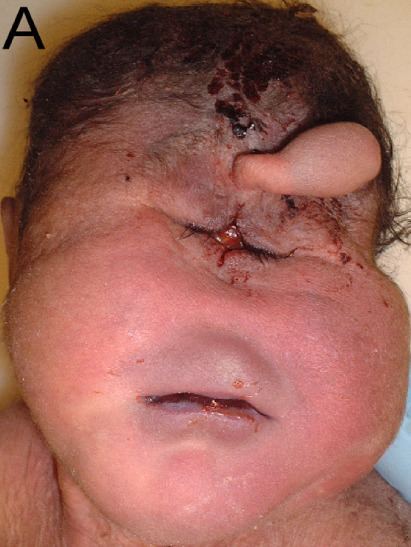In teratology, proboscis is a blind-ended, tubelike structure, commonly located in the midface.
Proboscis formation are classified in four general types: holoprosencephalic proboscis, lateral nasal proboscis, supernumerary proboscis, and disruptive proboscis.
Holoprosencephalic proboscis is found in holoprosencephaly. In cyclopia or ethmocephaly, proboscis is an abnormally formed nose. In cyclopia, a single median eye is associated with arrhinia (absence of the nose) and usually with proboscis formation above the eye. In ethmocephaly, two separate hypoteloric eyes are associated with arrhinia and supraocular proboscis formation. In cebocephaly, no proboscis formation occurs, but a single-nostril nose is present.Lateral nasal proboscis (proboscis lateralis) is a tubular proboscis-like structure and represents incomplete formation of one side of the nose; it is found instead of a nostril. The olfactory bulb is usually rudimentary on the involved side. The lacrimal duct (tear duct), nasal bone, nasal cavity, vomer, maxillary sinus, cribriform plate, and ethmoid cells are often missing on the involved side. Ocular hypertelorism may be present. The proboscis lateralis is a rare nasal anomaly.Supernumerary proboscis (Accessory proboscis) is found when both nostrils are formed and a proboscis occurs additionally. Accessory proboscis arise from a supernumerary olfactory placode.Disruptive proboscis occur if an early embryonic hamartoneoplastic lesion arises in the primitive prosencephalon.
